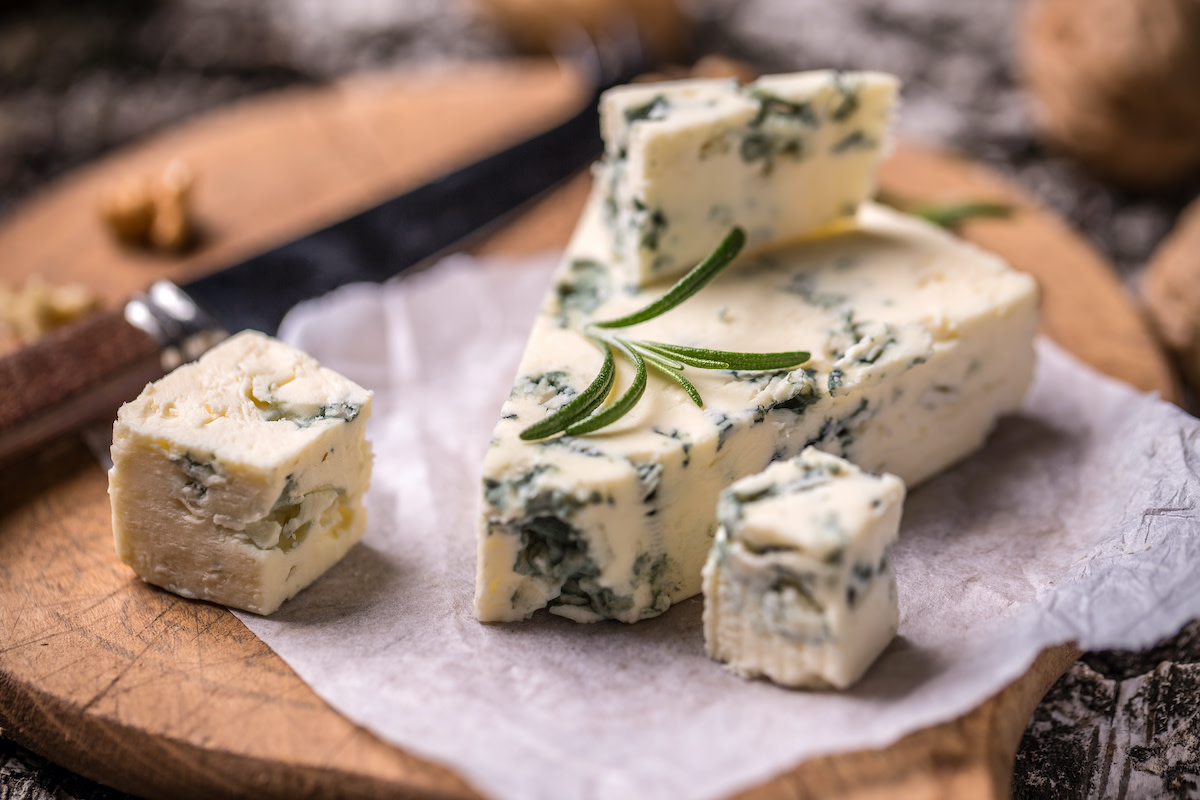Stilton Cheese: 3 Ways to Serve Stilton Cheese
Written by MasterClass
Last updated: Sep 28, 2021 • 2 min read
Stilton cheese is a British blue cheese characterized by a salty, earthy flavor and blue mold veins.
Learn From the Best
What Is Stilton Cheese?
Stilton cheese is a British cheese—a creamy cow’s milk cheese with a consistency similar to Brie, though not quite as runny. There are two varieties of Stilton cheese. The first is the more popular blue Stilton cheese. This is a blue cheese that includes a strain of the fungus Penicillium roqueforti, which gives the cheese its signature blue veins. The second variety is white stilton. This soft cheese variety is a young version of blue Stilton cheese. It does not contain Penicillium roqueforti. White stilton often contains apricots or other dried fruits.
You can only label cheeses as Stilton cheeses if you make them in the UK’s Derbyshire, Nottinghamshire, or Leicestershire with local, pasteurized cow's milk. This is in accordance with Protected Designation of Origin law (PDO). Other blue cheeses, including Italian Gorgonzola and sheep's milk Roquefort from France, are similar in taste and texture.
A Brief History of Stilton Cheese
According to records, people made Stilton cheese, also known as the king of English cheeses, as early as the seventeenth century. It’s unclear whether cheesemakers ever crafted Stilton in the village of Stilton, England; however, cheesemakers did sell it there. Notably, the Bell Inn, an important stagecoach hotel, sold Stilton to those who journeyed through the town on their way to the Great North Road (a medieval thoroughfare between England and Scotland).
How Do Cheesemakers Make Stilton Cheese?
Stilton cheese results from a traditional cheese-making process. A creamery pours fresh milk into a stainless steel vat along with a special blend of cultures, bacteria, mold spores, and rennet (already curdled milk to facilitate the curdling process).
Once all the milk curdles, the creamery cuts the curds, separates them, and strains off the whey. Then they transfer the curds into molds and place the very young cheese on shelves to age. The cheesemakers turn the molds once daily. After about five weeks, they pierce the cheese with needles, allowing air to enter the cheese and foster bacteria growth. This part of the process creates Stilton’s signature blue mold veins.
3 Ways to Serve Stilton Cheese
Stilton is a favorite cheese board option and pairs well with sweet flavors, making it a popular dessert cheese. Here are a few ways you can serve this popular cheese:
- 1. As an accompaniment to port wine: The sweetness in port wine balances the salty, pungent flavors of Stilton cheese.
- 2. Drizzled with honey: For a sweet and savory appetizer or dessert, serve Stilton with crusty bread or crackers and a drizzle of honey.
- 3. With dried fruit and nuts: The sweet flavors of dried cranberries, apricots, pears, or walnuts pair well with Stilton, either at the beginning or end of a meal.
Want to Learn More About Cooking?
Become a better chef with the MasterClass Annual Membership. Gain access to exclusive video lessons taught by the world’s best, including Gordon Ramsay, Gabriela Cámara, Chef Thomas Keller, Dominique Ansel, Yotam Ottolenghi, Alice Waters, and more.
